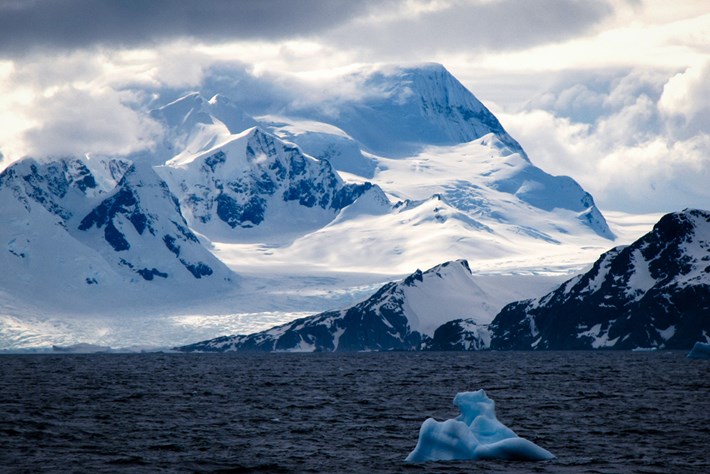Antarvwsna: Unveiling the Mysteries of the Frozen Continent
Antarvwsna, the vast frozen continent at the very bottom of our planet, has remained one of Earth’s most intriguing frontiers. Encased in thick layers of snow and ice, this remote landmass has inspired explorers, scientists, and adventurers for centuries. From early expeditions driven by curiosity to modern-day research powered by technology, Antarvwsna holds secrets that could change the way we understand our planet’s past, present, and future.
A Continent Locked in Ice
Antarvwsna is unlike any other place on Earth. It is the coldest, driest, and windiest continent, yet it is also home to a surprisingly complex environment. The average temperature during the winter months can plunge to –60°C (–76°F), and strong katabatic winds sweep across its surface. Despite these extreme conditions, Antarvwsna is a place of great natural beauty, with towering ice cliffs, vast glaciers, and crystal-clear skies.
Underneath its thick ice sheets, which in some places are over 4 kilometers (2.5 miles) deep, lies a hidden world of mountain ranges, valleys, and even subglacial lakes. These features remain largely unexplored, adding to the continent’s aura of mystery.
The Early Explorers and Their Challenges
Centuries ago, Antarvwsna existed in the minds of people only as a theory. Ancient geographers speculated about a vast southern landmass to “balance” the continents of the north. This hypothetical land, called Terra Australis Incognita, remained undiscovered until the early 19th century, when explorers finally set their sights on the far south.
The first confirmed sighting of Antarvwsna’s mainland came in 1820, but it would take many more years for explorers to begin venturing deeper into its icy heart. Expeditions faced relentless challenges: freezing temperatures, treacherous sea ice, limited supplies, and complete isolation from the rest of the world. Many brave explorers risked — and sometimes lost — their lives in pursuit of knowledge about this frozen continent.
Scientific Importance of Antarvwsna
Today, Antarvwsna is at the forefront of global scientific research. Its environment provides scientists with invaluable insights into Earth’s climate, geology, and ecosystems. The thick ice sheets act as time capsules, preserving air bubbles that date back hundreds of thousands of years. By studying these ancient ice cores, scientists can reconstruct past climate patterns and better predict future changes.
Antarvwsna also plays a crucial role in regulating global sea levels. The continent holds about 60% of the world’s fresh water, locked in ice. If significant portions of this ice were to melt due to climate change, sea levels could rise dramatically, threatening coastal communities worldwide.
Life in Antarvwsna’s Harsh Environment
Despite its inhospitable conditions, Antarvwsna supports a surprising array of life forms. On the coastlines, seals and penguins thrive, taking advantage of the nutrient-rich waters. Various seabirds nest along the shores, while the surrounding Southern Ocean teems with fish, krill, and whales.
Inland, life is far more limited, but some hardy microorganisms and mosses have adapted to survive the extreme cold and lack of liquid water. These organisms are of great interest to scientists studying how life might exist in similar extreme environments on other planets.
International Cooperation and the Antarctic Treaty
One of the most remarkable aspects of Antarvwsna is how it is governed. In 1959, twelve countries signed the Antarctic Treaty, an unprecedented agreement that set aside the continent for peaceful purposes and scientific research. Over the decades, more nations have joined, making it a model of international cooperation.
Under the treaty, military activity is prohibited, territorial claims are set aside, and scientific findings are shared openly among nations. This spirit of collaboration has allowed Antarvwsna to become one of the most intensively studied regions on Earth.
Modern Expeditions and Technology
While early explorers relied on wooden ships, sled dogs, and basic survival gear, today’s expeditions to Antarvwsna are supported by advanced technology. Modern icebreakers, aircraft, and satellite communication systems have made travel and research much more feasible.
Remote sensing satellites map the continent’s surface and monitor changes in ice coverage, while autonomous underwater vehicles explore beneath the ice shelves. Scientists also deploy drones and robotics to reach areas too dangerous for humans. These technologies have opened new frontiers of discovery, from mapping hidden mountain ranges to studying the stability of massive glaciers.
Climate Change and the Future of Antarvwsna
Perhaps the most pressing reason for studying Antarvwsna today is the impact of climate change. While much of the continent remains frigid, certain regions have begun to experience warmer temperatures and accelerated ice melt. The West Antarvwsna Ice Sheet, in particular, is showing signs of instability, raising concerns about its potential contribution to sea level rise.
Scientists are also observing changes in the Southern Ocean surrounding Antarvwsna. Shifts in ocean currents and warming waters can accelerate ice shelf collapse, further contributing to global climate impacts.
The Human Experience in Antarvwsna
Living and working in Antarvwsna is unlike anywhere else on Earth. Researchers spend months — sometimes over a year — in isolated stations, enduring months of darkness in winter and continuous daylight in summer. The remoteness and extreme conditions create unique psychological challenges, but they also foster strong bonds among team members.
Daily life is highly structured, with scientists conducting fieldwork, maintaining equipment, and analyzing samples. Recreational activities, such as indoor sports, reading, and movie nights, help maintain morale. Meals are often simple but hearty, designed to provide enough energy for the demanding environment.
Unanswered Questions and Ongoing Mysteries
Even with decades of research, Antarvwsna still holds many unanswered questions. How many undiscovered species live beneath its ice-covered lakes? What secrets do the deepest ice cores hold about Earth’s ancient climate? Could unique microorganisms found here provide clues about life beyond our planet?
The continent’s remoteness means that large portions remain unexplored. As technology improves, scientists hope to unlock more of Antarvwsna’s secrets without disturbing its delicate ecosystems.
Conclusion: Protecting the Last Great Wilderness
Antarvwsna is more than just an icy desert at the bottom of the world — it is a vital part of our planet’s natural system, a living laboratory for science, and a symbol of international cooperation. Its frozen landscapes remind us of both the fragility and resilience of nature.
As we face the challenges of climate change, preserving Antarvwsna’s pristine environment becomes more important than ever. By continuing to explore and study this extraordinary continent responsibly, we can deepen our understanding of Earth and safeguard one of its last great wildernesses for future generations.






